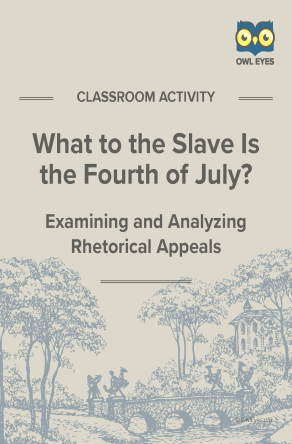What to the Slave Is the Fourth of July? Rhetorical Appeals Activity
- 11 pages
- Subject: Ethos, Logos, Pathos, Rhetorical Devices, Lesson Plans and Educational Resources
- Common Core Standards: RI.11-12.3, RI.11-12.5, RI.11-12.6, RI.11-12.9, RI.9-10.3, RI.9-10.5, RI.9-10.6, RI.9-10.9
- Grade Levels: 9, 10, 11, 12
Additional What to the Slave Is the Fourth of July? Resources
Product Description
On July 5th, 1852, Frederick Douglass delivered a speech at the request of the Rochester Ladies’ Anti-Slavery Association. By then Douglass was one of the leading figures of the abolitionist movement, and so he used the occasion to speak about slavery. Though Douglass at first discusses the legacy of the American Revolution in generous terms, he then explores the conflict of celebrating liberty at a time when slavery looms large in the United States. He personalizes the conflict, pointing out the tension he experiences as an African American asked to commemorate the Fourth of July. Douglass employs rhetorical appeal to ethos, pathos, and logos in order to convey his powerful criticisms of American slavery and all who support it.
Skills: analysis, close reading, drawing inferences from text, examining the impact of diction on audience
About This Document
The Owl Eyes Rhetorical Appeals activity gives students an opportunity to practice examining and analyzing the Aristotelian rhetorical appeals: ethos, pathos, and logos. Students will analyze selected rhetorical appeals from the text to determine which appeal they best represent and explain the appeal’s impact. The main components include the following:
- A brief introduction to the text
- A detailed handout on rhetorical appeals
- A list of tips for spotting rhetorical appeals
- A step-by-step guide to activity procedure
- A detailed answer key for teachers
In completing this worksheet, students will be able to examine and analyze Aristotle’s three rhetorical appeals in order to evaluate works of rhetoric and the techniques they employ.







